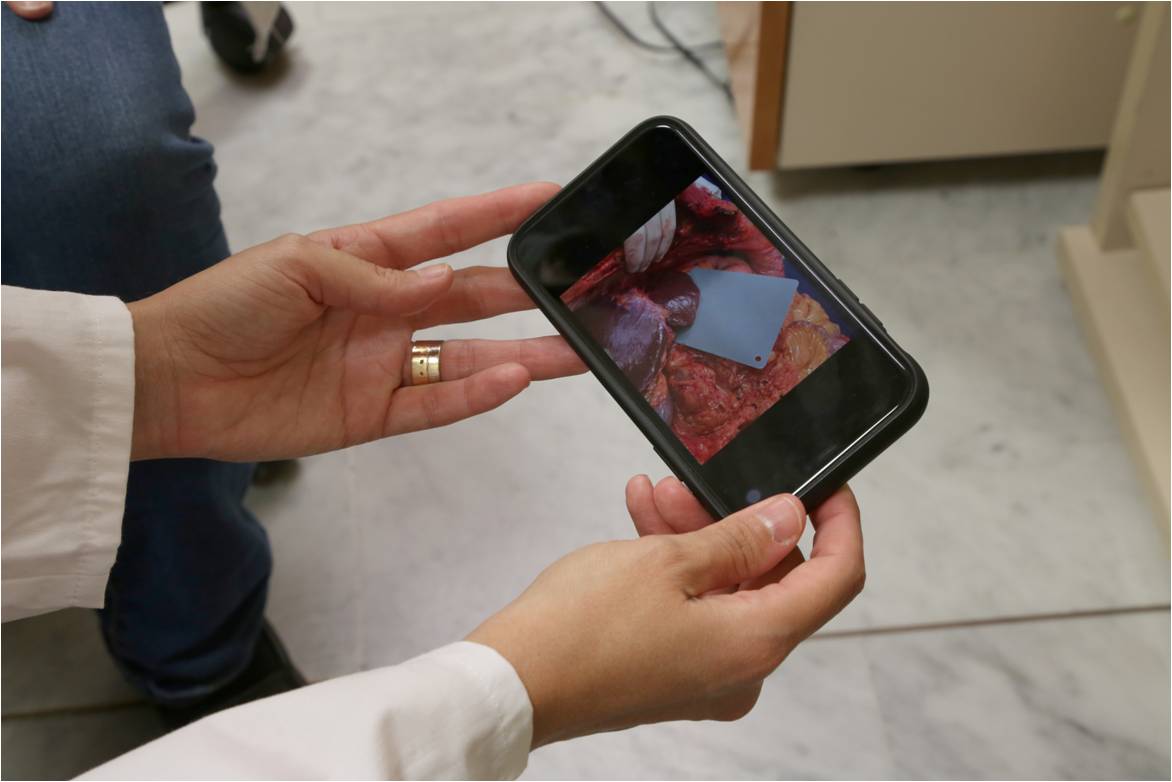A new artificial intelligence tool to help detect whether a liver is suitable for transplantation
A new artificial intelligence tool to help detect whether a liver is suitable for transplantation
Researchers at the Vall d'Hebron Barcelona Hospital Campus and the Department of Information and Communication Technologies have developed an artificial intelligence algorithm that allows ascertaining the levels of fat in the liver. The technology, based on photographs of the organ taken by a smartphone, will help to ascertain more efficiently whether a liver is suitable for transplantation.

Researchers at the Vall d'Hebron Barcelona Hospital Campus and Pompeu Fabra University (UPF) have developed an artificial intelligence algorithm that allows ascertaining the levels of fat in the liver. The technology, based on photographs of the organ taken by a smartphone, will help to ascertain more efficiently whether a liver is suitable for transplantation.
In Spain, every year more than 1,000 liver transplants are performed. This makes the liver the second organ in the ranking of transplants, only behind kidney transplants. However, potential replacement livers must often be ruled out as they are not suitable for transplantation. One cause is hepatic steatosis, or fatty liver. On these occasions, the cold needed to preserve the organ causes the fat to form small crystals that break the cells. This may damage the liver and, therefore, render the transplant unsuccessful.
It is essential, therefore, to analyse the levels of fat in the liver to make a decision as to whether or not to perform the transplant. However, this evaluation is usually carried out by the surgeon simply assessing the hue of yellow, characteristic of fat, with the naked eye. In this context, researchers from the Digestive and Liver Diseases Department at the Vall d'Hebron Research Institute (VHIR), the Vall d’Hebron University Hospital Hepatobiliary and Pancreatic Surgery and Transplant Department, and the BCN MedTech Research Unit of the UPF Department of Information and Communication Technologies, have developed Livercolor, a tool to objectively assess the degree of steatosis based on photographs.
Artificial intelligence for more efficient transplants
Taking a picture of the potential replacement liver using a smartphone, running it through an artificial intelligence algorithm based on colour and texture features and for the tool to report the fat levels and whether the organ is suitable or not for transplantation. This is the idea of the creators of Livercolor.
The artificial intelligence tool underpinning this technology has been trained using photographs of the liver tagged according to the results of liver biopsies, the most reliable way to determine the degree of steatosis. “In clinics, Livercolor would be able to determine whether a yellow hue and a specific texture indicate a suitable level of steatosis or not for transplantation. Should it not be suitable, the liver would be ruled out”, explains Concepción Gómez-Gavara, a surgeon with the Hepatobiliary and Pancreatic Surgery and Transplant Department of the Vall d'Hebron University Hospital and researcher at the Digestive and Liver Diseases Department of the VHIR.
Thus, Livercolor, compared to visual assessment, provides an objective methodology for deciding whether or not a liver should be ruled out. “This technology would enable using a greater number of livers that would otherwise be ruled out. The method is clearly more efficient than a decision based on what the physician can appreciate with the naked eye”, explains Itxarone Bilbao, head of Section of the Hepatobiliary and Pancreatic Surgery and Transplant Department of the Vall d'Hebron University Hospital. “We are now working to create a mobile app to conduct a multicentre study to be able to apply the technology in the near future”, adds Gemma Piella, a researcher at the UPF BCN MedTech Research Unit. “We are confident that once the project is developed, it will end up being useful generally and facilitate the process of liver donations”, concludes Javier Vázquez-Corral, a researcher at the UPF Department of Information and Communication Technologies (DTIC).
Currently, Livercolor is participating in the Barcelona Activa Accelerator Programme, an initiative to steer and support high technological impact projects in the process of market entry. Livercolor was one of ten projects selected to participate in this year’s programme. In addition, the project has received €110,000 of funding from the Mutua Madrileña Foundation through the 17th Call for Health Research Grants, which will enable continuing to develop the Livercolor platform.
